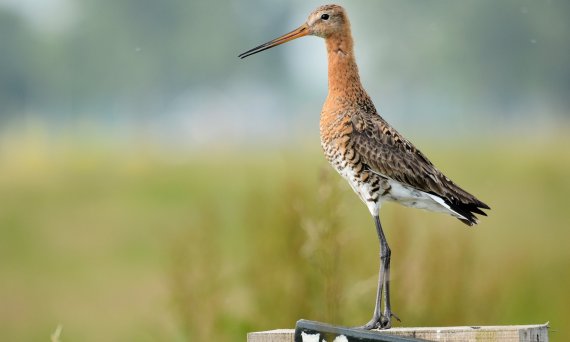© Public Domain Pictures
The researchers outlined several scenarios with different sets of measures and their expected impact on field bird populations. They used the black-tailed godwit as a model bird. Their conclusion: it is not yet too late to save the black-tailed godwit, but its habitat would have to be improved considerably. The areas where it lives need to be wetter, with different vegetation and less disturbance.
The researchers focus mainly on reserves and areas where agricultural nature management is already being practised. The total area concerned is 146,000 hectares, half of which is farmland. With good planning and management, Melman believe a sustainable population of 40,000 breeding pairs of black-tailed godwits could thrive on this land (there are currently 32,000 to 36,000). Other field birds would benefit from the measures too. The number of breeding pairs of northern lapwing (now 24,000) could almost double, and the same goes for the common redshank (now 10,500 breeding pairs). There is a price ticket attached, though: 100 million euros for better planning, and 20 million a year on top of that for better management.
A lot of this money would be needed just to make the areas wetter. It would also be necessary, says Melman, to tackle the vegetation in many places. ‘The landscape should be opener. Field birds like open areas. But because wood is used less nowadays, woods and hedgerows are growing taller than they used to. Also, the grass in many farming areas is too thick to walk through and after early mowing, chicks are easy prey. A lot can be gained with the right mowing calendar and by creating drainage pools.’
Disturbance and predation also make life hard for field birds. People walking their dogs, for instance, are disastrous for breeding success. And when there are chicks, foxes, buzzards and crows are all waiting to eat them up. Melman sees hunting as a last resort, though. ‘In the first instance, you must look carefully at the reasons why there are so many predators. Crows, for instance, survive the winter by eating out of open silos on farms. It is easy to do something about that.’

